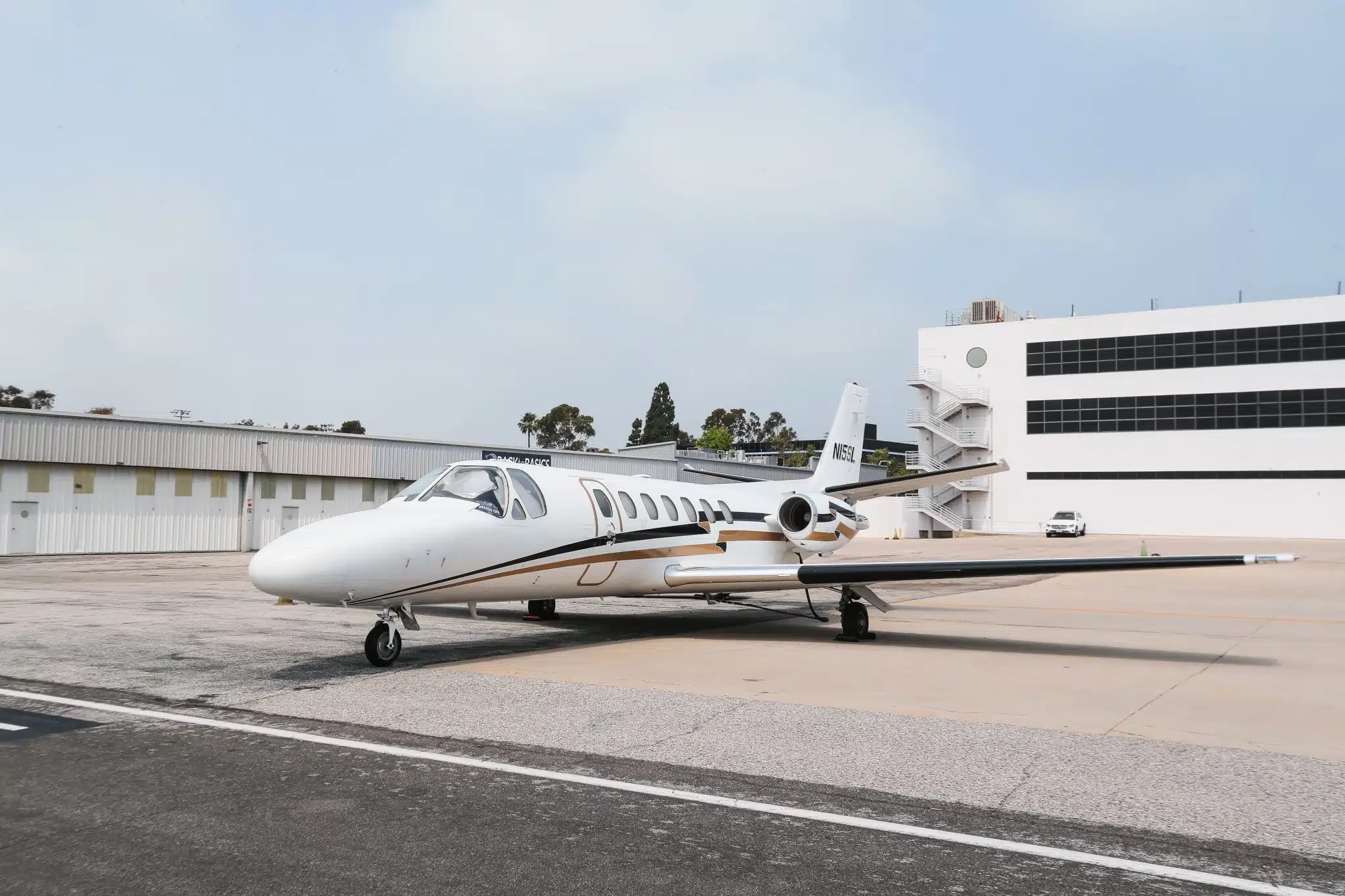Cessna Citation V For Sale
The Cessna Citation V is a business jet built by Cessna. A stretched version of the Citation S/II, a Model 560 prototype flew in August 1987, it was certified on December 9, 1988, and delivered from April 1989; 774 were delivered until 2011. The upgraded Citation Ultra was announced in September 1993, the Citation Encore upgraded with PW535 turbofans was announced in 1998, before the improved Encore+. Its US military designation is UC-35 as an executive transport and OT-47B as a drug interdiction reconnaissance aircraft.
LOOKING TO BUY A CESSNA CITATION V ?DESIGN & DEVELOPMENT:
The Citation V (Model 560) is a development of the Citation S/II, retaining the supercritical airfoil and swept wing roots of that aircraft, but with a 1.5 ft (0.46 m) fuselage stretch and recontoured interior for increased passenger space. The passenger cabin is 17.3 ft (5.3 m) long, 4.9 by 4.8 ft (149 by 146 cm) wide and high with a dropped aisle, has seven windows on each side and accommodates a four-seat club plus three chairs and a closed, belted lavatory. Maximum seating capacity is eleven, consisting of two pilots, eight passengers in the cabin, and one additional passenger or crew member in the belted lavatory. The engines were changed to more powerful Pratt & Whitney Canada JT15D-5A turbofans with 2,900 lbf (13 kN) of thrust, an overall increase of 800 lbf (3.6 kN) over the S/II that increased cruise speed to 425 kn (787 km/h) and service ceiling to 45,000 ft (14,000 m), although maximum range decreased from 2,090 nmi (3,870 km) to 1,960 nmi (3,630 km) due to slightly increased fuel consumption. Cessna also replaced the fluid deicing system of the S/II with improved pneumatic deicing boots for decreased weight and easier maintenance, and the horizontal stabilizer span was increased slightly to compensate for the increased engine thrust. The Citation V was also the first Citation with an electronic flight instrument system (EFIS) offered as standard equipment, albeit only on the captain’s side.
A preproduction prototype flew in early 1986 and the first engineering prototype made its maiden flight in August 1987. The Citation V was announced at the NBAA convention later that year, Federal Aviation Administration (FAA) certification was granted on December 9, 1988 and 262 were delivered between April 1989 and mid 1994. The Citation V was the best-selling business jet on the market during its production run.
The Citation V was followed in 1994 by the Citation Ultra with slightly more thrust, the Citation Encore in 2001 then the Citation Encore+ in 2007 through early 2010.
Citation Ultra
The upgraded Citation V Ultra was announced in September 1993 and FAA certification was granted in June 1994. It features extensively redesigned JT15D-5D engines with new compressors, high-pressure turbines, and a one-piece solid machined fan disks, increasing thrust to 3,045 lbf (13.54 kN) while reducing fuel consumption and weight; consequently, the Ultra was the first straight winged Citation with sufficient performance to exceed its critical Mach number in level flight. The captain’s side EFIS of the Citation V was upgraded to a full Honeywell Primus 1000 glass cockpit for both pilots. Deliveries amounted to 279. The Ultra was named Flying magazine’s “Best Business Jet” of 1994 and it was produced until 1999. Both the Citation V and Ultra hold 5814 pounds of fuel.
By 2018, Citation V/Ultra were priced at $1.1–1.6 million.
Citation Encore/Encore+
The Citation Ultra Encore was announced at the 1998 NBAA convention, upgraded with new PW535 engines, plus trailing link main undercarriage, more fuel capacity, updated interior and improved systems. Its maximum cruise altitude is FL 450. Deliveries amounted to 168. The Encore was certified in April 2000 with first delivery in late September 2000.
The upgraded Citation Encore+ was offered from 2007 through early 2010.[3] Deliveries amounted to 65. It was certified by the FAA in December 2006.
The Encore+ adds FADEC and Rockwell Collins Pro Line 21 avionics with a center MFD and both side PFDs. Its weight increased by 200 lb (91 kg) and, typically equipped, it can haul a 850–1,170 lb (390–530 kg) payload with full fuel. It can take off in 3,520 ft (1,070 m) in ISA conditions, has good hot-and-high performance and climbs directly to FL 450 in 27 min. It has a 1,800 nmi (3,300 km) range at 390 kn (720 km/h) TAS, the CJ3+ speed but slower than a CJ4. It can fly with one pilot but most are operated with two.
Fuel burn is 1,200 lb (540 kg) for the first hour then 900–1,000 lb (410–450 kg), it costs $1,800–1,900 per hour overall with December 2018 fuel prices and $325,000 for fixed expenses. Light checkups are due every 150 h, basic maintenance at 300 h or 24 months, comprehensive inspections at 1,200 h or 36 months, engine hot section inspections at 2,500 h with 5,000 h overhauls and simple inspections at 10,000 and 12,000 h and at 10,000 and 15,000 landings.
An Encore+ is valued at $3.4–3.8 million in December 2018 and it benefits from Textron Aviation’s support. The CJ3 has better fuel efficiency and runway performance but a shorter cabin, the Learjet 45XR cruises faster and hauls more but needs longer runways and burns more fuel, while the CJ4 has better payload/range but is more expensive. The later Model 560 variants are the fastest and farthest flying jets with the type certificate of the original Citation 500.
You Could Also Consider a Learjet 40 Or Cessna CJ2
Resource – Wiki

